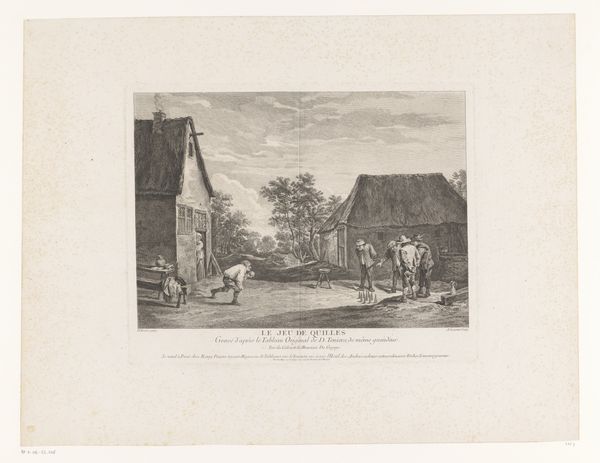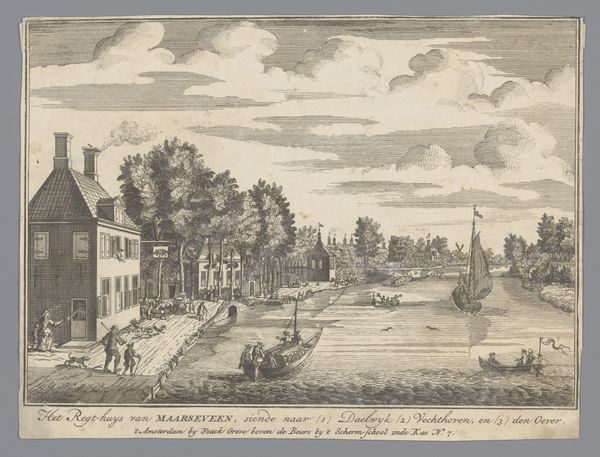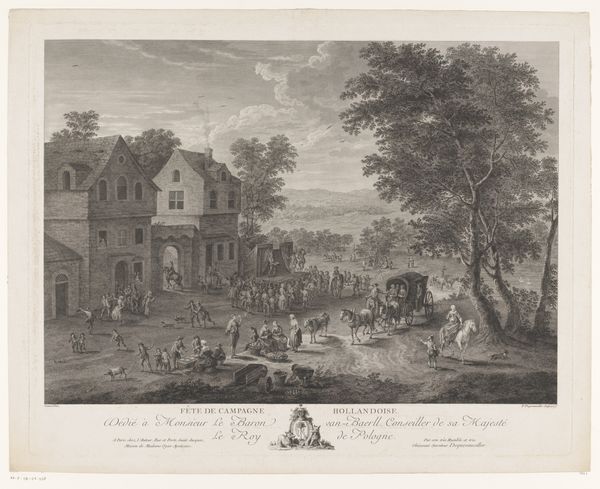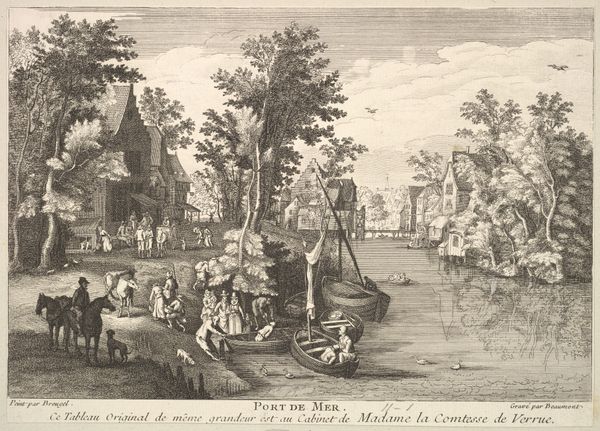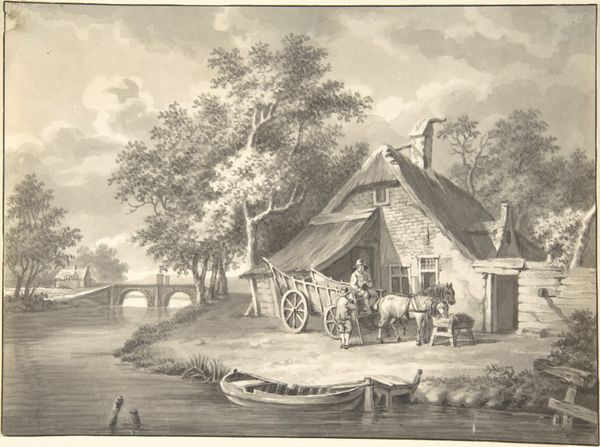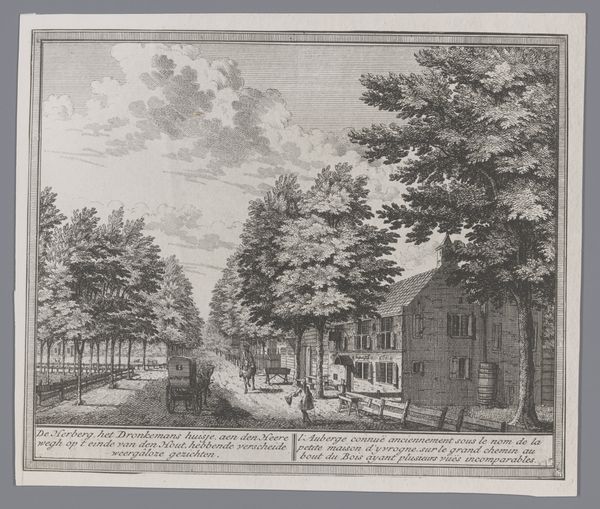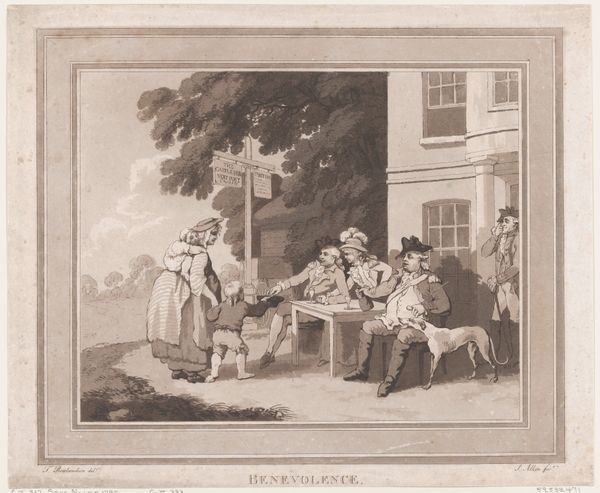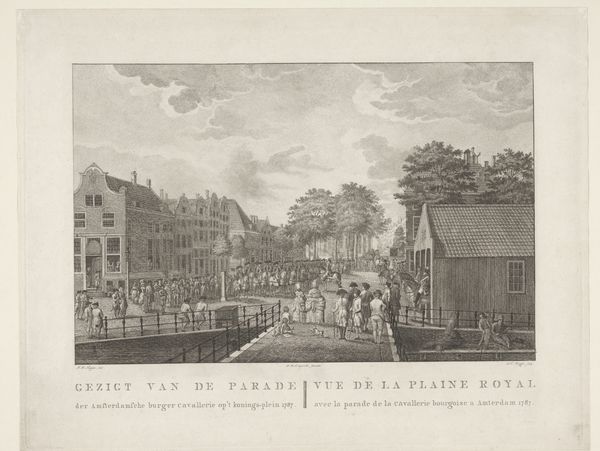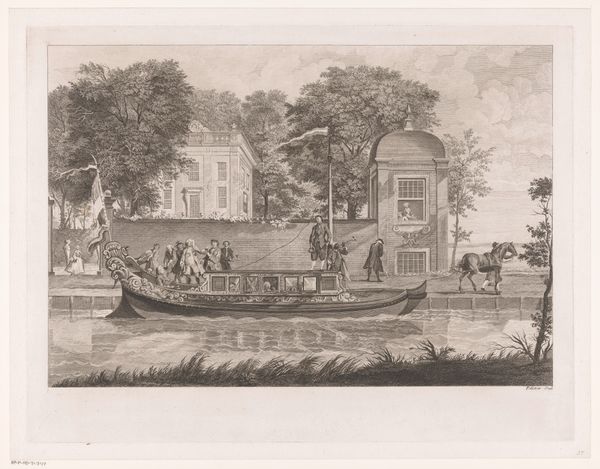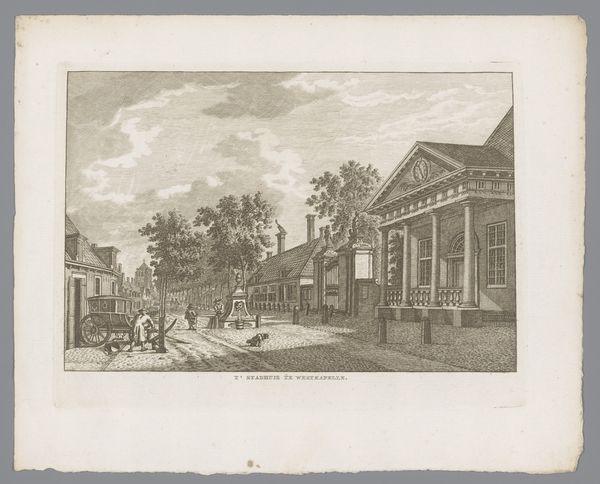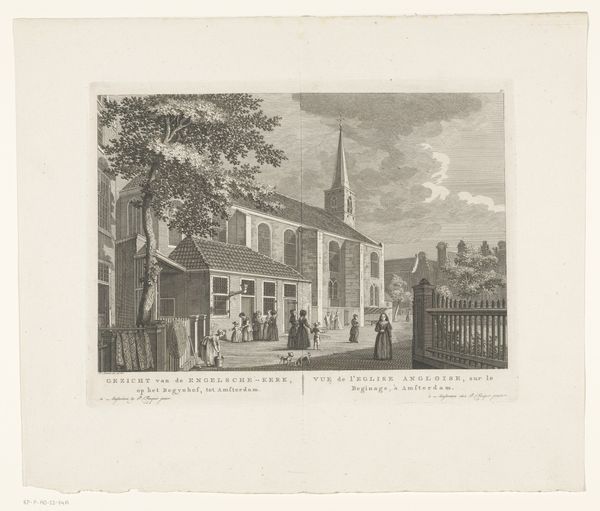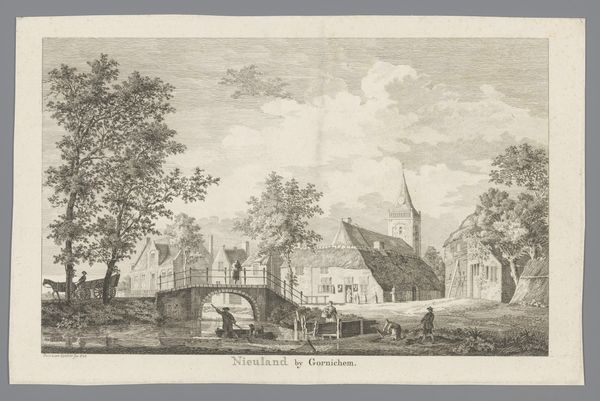
print, engraving
#
baroque
# print
#
old engraving style
#
landscape
#
cityscape
#
genre-painting
#
engraving
Dimensions: height 294 mm, width 358 mm
Copyright: Rijks Museum: Open Domain
Curator: Let’s turn our attention to this detailed engraving titled “Mensen voor Herberg het Bokje,” dating back to around 1757-1764. Editor: My initial impression is a cozy sort of anticipation, a muted palette creating a sense of subdued, almost secretive pleasure brewing. I wonder what tales those tavern walls could whisper? Curator: Indeed. Rendered through the exacting medium of engraving, we are offered a scene of daily life, a genre painting nestled within a cityscape. Observe the careful balance of elements, the architectural form of the inn juxtaposed with the landscape’s organic lines. The use of hatching and cross-hatching to modulate light and shadow, crafting depth is really well executed. Editor: Absolutely! See how Pelletier orchestrates depth—the inn, figures gathered round a table, then receding to that distant horizon. I can almost hear the clinking glasses and the murmur of conversations carried on the breeze. Even that watchful dog by the table! Such quiet realism with such emotional resonance— it all draws me into the fold. The little Bokje seems like it will swallow all and any type of life! Curator: Consider also the broader stylistic context. There’s an undeniable influence of the Baroque. The dramatic staging of the scene. Furthermore, the arrangement of the figures, the slight theatricality, speaks to an era obsessed with order and representation, a desire to categorize the observable world through art. Editor: I'm sensing that— the careful balance and everything. What does "Bokje" refer to exactly, what is the place of this "Bokje" here? Why? Also the scene with the hunter arriving to the "bokje" creates tension that something can go bad any second. The lighting is interesting as it illuminates only some parts while everything else is very shadowed creating this sense of drama even within its still composure. Curator: Good eye. The scene plays on the subtle power dynamic between urban and rural life. The composition, however, maintains a sense of controlled realism that underscores Pelletier’s formal skill. This balance between content and construction is paramount. Editor: For me, standing here now, looking at the play of light on the aged paper...it’s as if I’m granted access to the 18th century! One big long-gone tableau. A pint, a conversation, and then fading out. Curator: A fitting sentiment to conclude. Pelletier has furnished us with not merely an image, but with an experience—a measured composition, to be sure, yet alive with quiet contemplation.
Comments
No comments
Be the first to comment and join the conversation on the ultimate creative platform.
